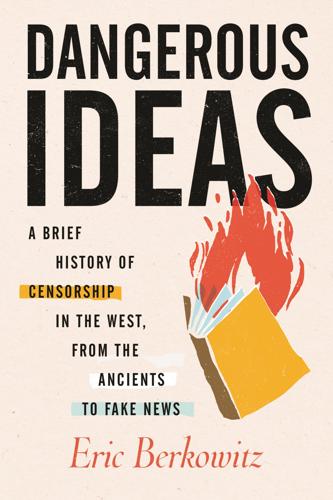
Dangerous Ideas: A Brief History of Censorship in the West, From the Ancients to Fake News
by
Eric Berkowitz
Published 3 May 2021
Before mass printing began, even dubious materials were often thought to pose little danger, because they were usually confined to upper-class men. But once printing gave all strata of society access to words and images, modern censorship began in earnest. The Catholic Church issued its Index of Forbidden Books (Index Librorum Prohibitorum) in 1559; pornography, an instant sensation among the unwashed, was proscribed; and much of the key learning of the Renaissance was banned, as were the plain-spoken pamphlets of Martin Luther and other religious nonconformists. As for reports about the workings of government, the seventeenth-century English censor Roger L’Estrange summed up official attitudes when he wrote that public newspapers must be suppressed because they “make the multitude too familiar with the actions . . . of their superiors.”25 The apogee—although far from the end—of Western class-based censorship was in nineteenth-century Europe, where agitation from the lower and working classes for political and economic reforms, coupled with periodic revolutions, drove the upper orders to a state of near desperation.
…
They targeted the texts of Catholics, Jews, and—as rival Protestant sects multiplied—one another. After a half century of chaos, authorities systematized their censorship efforts, issuing catalogs of offending books, licensing schemes to pre-clear or refuse texts, and imposing import restrictions. The most important catalog was the Vatican’s Index of Forbidden Books (Index Librorum Prohibitorum (1559), which was intended to “expunge from human memory” the names of heretics, blacklisted printers, purveyors of certain sexual works, and other offending matter such as vernacular Bibles.6 This wasn’t the first such list; Pope Gelasius I had catalogued sixty “bad” books way back in 496.7 It was the most extreme, however, banning the work of about 550 authors, including Luther, Calvin, Machiavelli, and Rabelais.
…
Robert Justin Goldstein, Political Censorship of the Arts and the Press in Nineteenth Century Europe (Basingstoke, UK: Macmillan, 1989), 34–35. 5. Haig A. Bosmajian, Burning Books (Jefferson, NC: McFarland & Company, 2012), 68–70; Christiane Anderson, “Polemical Prints During the Reformation,” in Censorship: 500 Years of Conflict, ed. William Zeisel (New York: Oxford University Press, 1984), 35–36. 6. “Index Librorum Prohibitorum,” in Derek Jones, ed., Censorship: A World Encyclopedia (London: Routledge, 2001), 4277. 7. Daniel P. Sheridan, “The Catholic Case: The Index of Prohibited Books,” Journal of Hindu-Christian Studies 19, art. 8 (2006): 23. 8. Popper, Censorship of Hebrew Books, 52, 55–60, 84–87. 9. Goldstein, Political Censorship of the Arts and Press, 36. 10.
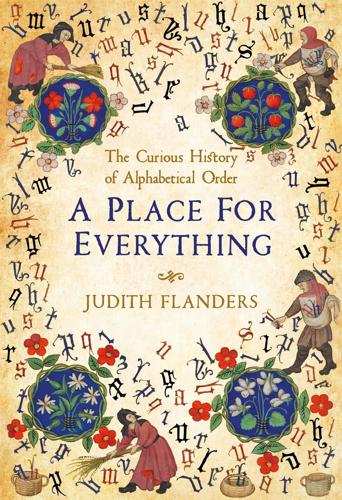
A Place for Everything: The Curious History of Alphabetical Order
by
Judith Flanders
Published 6 Feb 2020
Universities that held civic or religious authorization to print books were careful to produce their own lists of banned books: the first was issued by the Sorbonne in 1544, alphabetized by author, followed shortly by lists from universities, from Leuven in the Low Countries to Venice and Portugal. The first edition of the Vatican’s Index librorum prohibitorum, Index of Prohibited Books, appeared in 1559 under the authority of Paul IV. It was divided into three sections: authors who were entirely forbidden; individual works that were forbidden, although other works by the same authors might be acceptable; and anonymous banned works. The lists were compiled in alphabetical order, by author for the first and second parts and by title for the third.* Rulers knew that books could be revolutionary.
…
W. ref1 Henry of Bracton ref1 Henry VIII, King of England ref1, ref2 herbals see reference works; science texts heresies ref1 Heyne, Christian Gottlob ref1 hierarchical order see sorting systems hieroglyphs see writing Hippolytus of Rome ref1 Homer ref1 Hooke, Robert ref1 horn books see education Hotot, Richard ref1 Hugh of Pisa ref1, ref2 Hugh of St Cher ref1 Hugh of St Victor ref1 humanism ref1 Humbert of Romans ref1 hypertext see computers Ibn Manūr ref1 Ibn Sa’d ref1 ideographic writing see writing Iliad, the ref1 Index librorum prohibitorum see books, censorship of indexes card indexes ref1, ref2, ref3 tabbed card dividers ref1 classified indexes ref1 cross-references ref1, ref2, ref3, ref4, ref5, ref6 legal indexes ref1, ref2 name indexes ref1, ref2 precursors to ref1, ref2, ref3 in the High Middle Ages ref1, ref2, ref3, ref4, ref5 ref6, ref7n in the Late Middle Ages ref1, ref2, ref3 in the Early Modern period ref1, ref2, ref3, ref4, ref5, ref6, ref7, ref8, ref9 indexing process ref1, ref2, ref3, ref4, ref5, ref6 line numbering ref1, ref2, ref3 ref4 playing cards in ref1 slips for ref1 Innocent VIII, Pope ref1 International Institute of Bibliography ref1 inventories ref1, ref2 Irish script (Ogham) see writing ‘Iroha’ (poem) ref1 Isabella I, Queen of Castile ref1 Isidore of Seville xxviii, ref1, ref2, ref3, ref4, ref5, ref6, ref7, ref8, ref9 Islamic world ref1, ref2 Italian texts ref1, ref2, ref3 italic see typography James, Thomas ref1, ref2 James le Palmer ref1 Japanese script see writing Jean de Fayt ref1 Jefferson, Thomas ref1fn Jehan d’Ays ref1 Jerome, St ref1, ref2 Jewett, Charles Coffin ref1 John Balliol, King of the Scots ref1fn John of Damascus, St ref1 John of Freiburg ref1 John the Saracen ref1 Johnson, Samuel ref1fn, ref2n Josephinian Library (Vienna) see libraries Josephus, Flavius ref1 Justinian, Emperor of the East ref1 Kanish tablets ref1 Kasirer, Justice Nicholas ref1fn Kayser, Albrecht Christoph ref1 Khwarizmi, Muhammad ibn Musa al- ref1fn Kilwardby, Robert ref1 Kirkestede, Henry ref1, ref2, ref3n Konrad of Mure ref1 Korean scripts see writing Kublai Khan ref1 Latin ref1, ref2, ref3fn law in antiquity ref1 in the Middle Ages ref1, ref2, ref3, ref4 in the Early Modern period ref1, ref2 law French ref1fn, ref2 Decretum Gratiani ref1, ref2, ref3fn Merovingian law codes ref1 Mishnah (rabbinic laws) ref1 ledgers see notebooks Leibniz, Gottfried Wilhelm von ref1, ref2, ref3n, ref5n Leicester, Robert de Breteuil, 3rd Earl of ref1 Leiden, University of, and library ref1 Leitz, Louis ref1, ref2, ref3 Leo VI, Emperor of the East ref1 lever-arch files see bureaucracy Lewis, C.
…
S. ref1 Liber Glossarum ref1 Liber scintillarum ref1 libraries accession numbers ref1, ref2 Arabic–Islamic libraries ref1, ref2n Bodleian Library, Oxford ref1fn, ref2 British Library (British Museum), London ref1, ref2fn, ref3 Cambridge University Library ref1, ref2 cathedral libraries ref1, ref2, ref3 in China ref1, ref2 Great Library of Alexandria ref1 Harleian Library ref1 Josephinian Library, Vienna ref1 Leiden, University of ref1fn, ref2 in monasteries and convents ref1, ref2, ref3, ref4, ref5, ref6fn national libraries ref1, ref2 private libraries ref1, ref2, ref3, ref4, ref5 physical layout ref1 royal libraries ref1 shelfmarks ref1, ref2 signage ref1 subscription libraries ref1 synagogue libraries ref1 university libraries ref1, ref2, ref3, ref4 Vatican library ref1 Wolfenbüttel library ref1 Library Bureau ref1, ref2, ref3 line numbering see indexes linear writing systems ref1 Linnaeus, Carl ref1, ref2, ref3 literacy in the Middle Ages ref1, ref2, ref3 in the Early Modern period ref1 Locke, John ref1, ref2 logographic writing systems see writing Lombard, Peter, Bishop of Paris ref1, ref2, ref3, ref4, ref5, ref6 ref7 loose-leaf binders see notebooks Maimonides (Moses ben Maimon) ref1 Malpighi, Marcello ref1 manicules see typography manuscripts bound collections ref1 codices ref1 copying and reordering of ref1, ref2, ref3, ref4, ref5, ref6, ref7 indexes for ref1, ref2, ref3 marginalia in ref1, ref2, ref3, ref4 page layouts ref1, ref2, ref3, ref4 quires ref1 rubrication ref1, ref2 title pages ref1 Manutius, Aldus ref1, ref2fn Manzolli, Pier Angelo ref1fn marginalia ref1, ref2, ref3, ref4, ref5 Marlowe, Christopher ref1 Martin, Henri-Jean ref1 Martin of Poland ref1 Martius, Jeremias ref1 Maunsell, Andrew ref1 Maximilian I, Holy Roman Emperor ref1 Mayan glyphs see writing medical texts ref1, ref2, ref3, ref4, ref5 memory and learning ref1, ref2 legal limits of ref1 in oral cultures ref1, ref2, ref3 practical limits of ref1, ref2 Menahem ibn Saruq ref1 mendicant preachers ref1 Merovingian law codes see law Mesopotamian script see writing Meydenbach, Jakob ref1 middle classes ref1, ref2, ref3 Mishnah see law Molière ref1 monasteries; see also preaching orders; individual orders archives ref1 as centres of learning ref1, ref2, ref3 and indexing ref1 libraries see libraries money ref1, ref2 monographs (single-author works) ref1 Montfort, Amaury de ref1 Moréri, Louis ref1, ref2 Moser, Johann Jakob ref1 movable type see printing Muhammad, Prophet ref1 multi-author works ref1fn, ref2 multilingualism ref1fn, ref2, ref3 myths, origin of writing see writing Nathan ben Jehiel ref1 Naudé, Gabriel ref1 Neckam, Alexander ref1 newspapers, layout of ref1, ref2 Nicander of Colophon ref1 Nimrud ivories ref1 North Semitic script see writing notebooks, ref1, ref2, ref3, ref4, ref5, ref6, ref7, ref8, ref9, ref10 copybooks (letterpress books) ref1, ref2 ledgers ref1, ref2, ref3, ref4, ref5, ref6, ref7 loose-leaf binders ref1, ref2 tabbed notebooks ref1, ref2, ref3 writing tables ref1, ref2, ref3fn numbers, symbolic meanings ref1 Nuremberg Chronicle ref1 office furniture see bureaucracy Ogham see writing Old English texts ref1, ref2 Olympics, opening ceremonies ref1 Onomasticon (Eusebius) ref1 Onomasticon (Julius Pollux) ref1, ref2 oracle bones ref1 oral cultures ref1, ref2, ref3 Ortelius, Abraham ref1, ref2, ref3 Otlet, Paul ref1 Oxford, University of ref1, ref2, ref3; see also Bodley, Sir Thomas; James, Thomas; libraries Oxyrhynchus Papyri ref1, ref2, ref3 Pacioli, Luca ref1 page layout see books, layouts and organization pagination see books, layouts and organization Pamphilus of Alexandria ref1 Panckoucke, Charles-Joseph ref1 Panizzi, Antonio ref1 paper ref1fn, ref2, ref3, ref4, ref5, ref6, ref7; see also card indexes; notebooks carbon paper ref1 slips loose, for notetaking ref1, ref2, ref3, ref4, ref5, ref6 glued in notebooks ref1 for cataloguing ref1, ref2, ref3, ref4 for dictionary-making ref1 Papias the Lombard ref1, ref2 papyrus ref1, ref2 parchment ref1, ref2, ref3 Paris, Matthew ref1 Paul the Deacon ref1 Peacock, Thomas Love ref1 pens and pencils ref1 Pepys, Samuel ref1, ref2, ref3n Perotti, Niccolò ref1 Peter of St Fleur ref1 Philip II, King of France ref1, ref2 Philip II, King of Spain ref1 Philitas of Cos ref1 Philo of Alexandria ref1 Phoenicians ref1, ref2 Pinakes (Tables) ref1, ref2, ref3n pinyin and computers see computers Placcius, Vincentius ref1, ref2, ref3 Plautus ref1 playing cards see indexing process Pliny the Elder ref1 Pollux, Julius ref1, ref2 Polynesian script see writing Pope, Alexander ref1 population ref1, ref2, ref3 postils (glosses) ref1 preaching orders ref1 printing ref1, ref2n; see also books, layouts and organization; typography block printing ref1, ref2 forms (to hold type) ref1 forms (printed documents) ref1 movable type ref1, ref2 Ptolemy, Claudius (mathematician and astronomer) ref1 Ptolemy I of Egypt ref1 quadrivium see education, trivium and quadrivium Quintilian (rhetorician) ref1 Qur’an xvii, ref1 Ralph de Diceto ref1, ref2, ref3, ref4, ref5 Rasis (physician and astronomer) ref1 Rastell, William ref1 Raymond of Toledo ref1 reading ref1 linear vs. non-linear reading ref1 purpose of ref1, ref2n teaching of ref1, ref2, ref3, ref4fn, ref5fn rebus ref1, ref2 reference works see also medical texts; science texts atlases ref1 bibliographies ref1, ref2, ref3, ref4, ref5, ref6 dictionaries see dictionaries encyclopedias see encyclopedias guidebooks ref1 herbals ref1, ref2 legal textbooks ref1, ref2n popularity of ref1 telephone books and directories ref1, ref2 thesauri ref1 Wikipedia ref1, ref2n Rheticus, Georg Joachim ref1 Richard I, King of England ref1, ref2 Richard of Wallingford ref1 ring binders see bureaucracy Ringelberg, Joachim Sterck van ref1 rock art ref1 Roget’s Thesaurus see reference works Rolle, Henry ref1 Rostgaard, Frederik ref1fn round robin letters ref1, ref2 Rozier, François ref1 rubrication see manuscripts Saadia Gaon, Rav ref1 Salesbury, William ref1fn Schöffer, Peter ref1fn, ref2, ref3 Scholasticism ref1, ref2 Schwenter, Daniel ref1 science texts ref1, ref2 encyclopedias ref1, ref2 herbals ref1, ref2 indexes ref1 medical texts ref1, ref2, ref3, ref4, ref5 natural history ref1, ref2, ref3, ref4, ref5 scrolls see books search tools ref1, ref2, ref3, ref4, ref5, ref6; see also books, layouts and organization; catalogues; computers; concordances; indexes; marginalia subcategories ref1 second-letter alphabetical order see alphabetical order Semitic languages ref1fn sermons ref1; see also distinctiones Sextus the Pythagorean ref1 Shakespeare, William ref1fn Shannon Company ref1, ref2 shelfmarks see libraries Shirley, James ref1fn Sicily, and government bureaucracy ref1, ref2 signatures (printed books) ref1, ref2fn single-author works ref1 Sir Gawain and the Green Knight ref1 slips see paper Solander, Daniel ref1 solander boxes see archives sorting systems ref1; see also bureaucracy; furniture alphabetical order see alphabetical order arbitrary order ref1, ref2, ref3, ref4, ref5 chronological order ref1, ref2, ref3, ref4, ref5, ref6, ref7, ref8, ref9, ref10, ref11, ref12, ref13, ref14 donor order ref1, ref2, ref3, ref4n double-entry bookkeeping ref1, ref2, ref3n genealogical order ref1, ref2, ref3, ref4 geographical order ref1, ref2, ref3, ref4, ref5fn, ref6 hierarchical order ref1, ref2, ref3, ref4, ref5, ref6, ref7, ref8, ref9, ref10, ref11, ref12, ref13, ref14, ref15, ref16, ref17, ref18n personal systems ref1, ref2, ref3, ref4, ref5 sound-based order ref1, ref2, ref3 topical order ref1, ref2, ref3, ref4, ref5, ref6, ref7, ref8, ref9, ref10 in antiquity ref1, ref2 in the early Middle Ages ref1, ref2, ref3 in the High Middle Ages ref1 in the Late Middle Ages ref1 in the Early Modern period ref1, ref2, ref3, ref4 filing ref1, ref2, ref3, ref4, ref5, ref6 furniture ref1, ref2, ref3, ref4 and values ref1, ref2, ref3, ref4 spelling, standardization of ref1 Sumerian cuneiform see writing supermarkets, categorization of products ref1 Tabennisis ref1, ref2 tables, definition ref1fn tables of contents see books, layouts and organization tabs see indexes; notebooks Taejong, King of Korea ref1 tax collection ref1, ref2, ref3 telephones ref1; see also reference works, telephone books Terence (Roman playwright) ref1 Textor, Johannes Ravisius ref1 third-letter alphabetical order see alphabetical order Thomas Aquinas, St ref1, ref2, ref3, ref4 Thomas of Ireland ref1 time, measurement of ref1, ref2, ref3 transliteration ref1 Trefler, Florian ref1 Tritheim, Johann ref1 trivium see education Trumbull, Sir William ref1 Turri, Pellegrino ref1fn typewriters and typing ref1, ref2 typography forms (to hold type) ref1 italic type ref1, ref2, ref3 manicules ref1 type-cases ref1, ref2, ref3 typographical desk ref1, ref1 Udenius, Christoph Just ref1fn union catalogues see catalogues Université de Paris ref1, ref2, ref3, ref4, ref5, ref6 Universities; see also libraries banned books ref1 curriculum ref1, ref2 grading systems ref1 urbanization ref1, ref2, ref3, ref4 Varro (grammarian) ref1 Vatican; see also archives; libraries Index librorum prohibitorum ref1 Verrius Flaccus ref1 Villiers, Édouard de ref1 Vincent of Beauvais ref1, ref2, ref3 Virgil ref1 Vitruvius (Roman architectural writer) ref1 Vives, Jan Ludovicus ref1, ref2 von Eyb, Albrecht ref1 Wadi el-ôl ref1 Waldensians ref1 Walsingham, Sir Francis ref1, ref2 Wanley, Humfrey ref1 Watts, Isaac ref1 wax tablets see writing materials Wedgwood, Ralph ref1fn Western Desert (Egypt) ref1, ref2 Wikipedia ref1, ref2n Wooton desks ref1 word lists ref1, ref2, ref3, ref4, ref5, ref6; see also dictionaries; glosses and glossaries; postils World Wide Web Consortium (W3C) ref1 writing xvii–xxviii, ref1 authority of ref1, ref2, ref3 origin myths xvii teaching of ref1, ref2, ref3, ref4 abjad scripts ref1, ref2 Arabic scripts ref1, ref2 Chinese scripts ref1, ref2, ref3, ref4, ref5 cuneiform script ref1 Etruscan ref1 Greek script ref1, ref2, ref3, ref4, ref5 Hebrew alphabet ref1 hieroglyphs ref1 ideographic writing ref1, ref2, ref3 Japanese scripts ref1 Korean scripts xvii, ref1, ref2 linear systems ref1 logographic writing systems ref1, ref2 Mayan glyphs ref1 Mesopotamian script ref1 North Semitic script ref1 Ogham (Irish script) ref1 Old Babylonian ref1 pictographs ref1, ref2, ref3 Polynesian script ref1n rock inscriptions ref1 runes ref1 Sumerian cuneiform ref1 writing materials ref1, ref2, ref3fn, ref4, ref5, ref6; see also paper; papyrus; parchment durability ref1, ref2 erasable surfaces ref1, ref2, ref3fn, ref4n portability ref1 blackboards and slates ref1fn wax tablets ref1fn, ref1, ref2, ref3fn Wu, Jinrong ref1 Yale College ref1, ref2, ref3 Zamora, Rodrigo de ref1 Zenodotus ref1, ref2, ref3n Zheng Quia ref1 Illustration credits In the text 1.
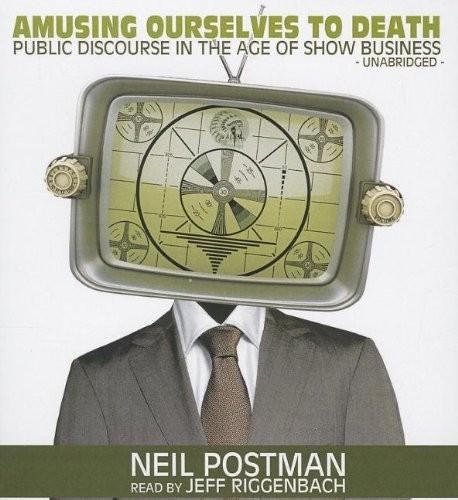
Amusing Ourselves to Death: Public Discourse in the Age of Show Business
by
Neil Postman
and
Jeff Riggenbach Ph.
Published 1 Apr 2013
And the problem posed by typography was recognized early; for example, by Henry VIII, whose Star Chamber was authorized to deal with wayward books. It continued to be recognized by Elizabeth I, the Stuarts, and many other post-Gutenberg monarchs, including Pope Paul IV, in whose reign the first Index Librorum Prohibitorum was drawn. To paraphrase David Riesman only slightly, in a world of printing, information is the gunpowder of the mind; hence come the censors in their austere robes to dampen the explosion. Thus, Orwell envisioned that (1) government control over (2) printed matter posed a serious threat for Western democracies.
…
Scott Ford, Gerald Ford, Henry Four Arguments for the Elimination of Television (Mander) Franklin, Benjamin Franklin, James Frelinghuysen, Theodore Freud, Sigmund Frye, Nonhrop Galileo Gerbner, George German Ideology, The (Marx) Goodrich, Samuel Goody, Jack Graham, Billy Great Awakening Greece, Classical; book censorship in; rhetoric in Greeley, Horace Guardian (Steele) “Gunsmoke” (TV show) Hamilton, Alexander Harris, Benjamin Harvard University Havelock, Eric Hawthorne, Nathaniel Hemingway, Ernest Henry VIII, King of England Herschel, John F. W. Heyman, John History and Development of Advertising, The (Presbrey) Hoffman, David Hofstadter, Richard Holbrook, Josiah Homer (Pope) Horn, Steve Huxley, Aldous ; Brave New World illuminated manuscripts Image, The (Boorstin) Index Librorum Prohibitorum Iranian hostage crisis Jackson, Jesse Japan Javits, Jacob Jay, John Jaynes, Julian Jefferson, Thomas Jews Johnston, J. R W. Kennedy, Edward Kennedy, John F. Kent, James Kissinger, Henry Koch, Edward “Kojak” (TV show) Koppel, Ted Las Vegas “Laugh-In” (TV show) lecture hallsh-century legal system; 18- and 19th-century ; televised leisure, changing role of librariesh-century Life Lincoln, Abraham Lincoln-Douglas debates Lindsay, John Lippmann, Walter literacy rates: Colonial; 19th-century “The Little House on the Prairie” (TV show) Locke, John; Essay Concerning Human Understanding Longfellow, Henry Wadsworth Look Lowell, James Russell Luther, Martin Lyceum Movement McCarthy, Joseph McGinnis, Joe, The Selling of the President McGovem, George McGuffy Reader McLuhan, Marshall McNamara, Robert MacNeil, Robert “MacNeil-Lehrer Newshour” (TV show) Madison, James Magnetic Telegraph Company Mander, Jerry, Four Arguments for the Elimination of Television Markham, Edwin Marshall,.
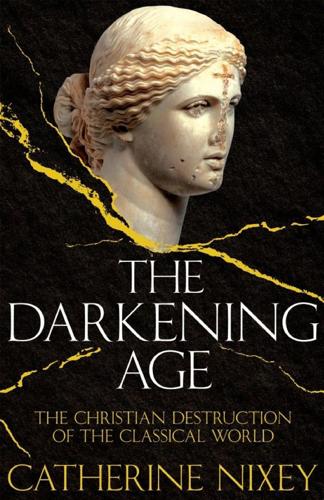
The Darkening Age: The Christian Destruction of the Classical World
by
Catherine Nixey
Published 20 Sep 2017
Christians shirked military service, the clergy actively preached pusillanimity, and vast amounts of public money were spent not on protecting armies but squandered instead on the ‘useless multitudes’ of the Church’s monks and nuns.11 They showed, Gibbon felt, an ‘indolent, or even criminal, disregard for the public welfare’.12 The Catholic Church and its ‘useless multitudes’ were, in return, magnificently unimpressed by Gibbon’s arguments, and they promptly placed his Decline and Fall of the Roman Empire on the Index Librorum Prohibitorum, its list of banned books.* Even in liberal England, the atmosphere became fiercely hostile to the historian. Gibbon later said that he had been shocked by the response to his work. ‘Had I believed,’ he wrote, ‘that the majority of English readers were so fondly attached even to the name and shadow of Christianity . . .
…
C. ref1 Galen at Alexandria ref1 Christian attitude towards ref1 disparagement of Christians and physicians ref1 observations and understanding of neuroanatomy ref1 pig experiment ref1, ref2, ref3 Galileo Galilei ref1 Garden of Eden ref1 Gaul ref1 Gaza ref1, ref2 Geffcken, Johannes ref1 Gell, Sir William ref1 Germanicus ref1 Gessius, Flavius Aelius ref1 Gibbon, Edward ref1, ref2, ref3, ref4, ref5, ref6 Decline and Fall of the Roman Empire ref1 Gnostic, Gnosticism ref1 God as all-seeing ref1, ref2, ref3 attitude towards pagans ref1 Augustine’s appeal to ref1 Celsus’s comments on ref1, ref2 choosing between Satan and God ref1 as the creator ref1, ref2 and the demons ref1 Galen’s comments on ref1 of Genesis ref1 and the language of the Bible ref1 pagans’ attitude towards ref1 Porphyry’s comments on ref1 and removal of abominations from His presence ref1 and the saving of mankind ref1 shape and form of ref1 Gratian, Emperor ref1 Great Persecution (AD 303) ref1, ref2 Greco-Roman world as cynical ref1 and divine benevolence ref1 hedonism of ref1 lusty pantheon of gods ref1 omens ref1 religious intensity in ref1 religious system ref1, ref2, ref3 variety of worship ref1 worship of gods forbidden ref1 Greenblatt, Stephen ref1 Hell ref1, ref2, ref3, ref4, ref5, ref6, ref7 Hercules ref1 Hermes ref1 Hermopolis, Egypt ref1 Herodotus ref1, ref2 Hipparchus ref1 Homer ref1, ref2 Iliad ref1 homosexuals ref1, ref2, ref3, ref4, ref5 Hopkins, Keith ref1 Horace ref1, ref2, ref3 Hours of Jeanne de Navarre ref1 Hypatia of Alexandria ref1, ref2 as astronomer and mathematician ref1 as local celebrity ref1 murder of ref1, ref2, ref3 non-partisan behaviour of ref1 pupils of ref1 romantic notions concerning ref1 rumours concerning ref1 Index Librorum Prohibitorum ref1 Inquisition ref1 Isis ref1, ref2 Islamic State ref1 Jacobus de Voragine, The Golden Legend ref1, ref2 and note Jehovah’s Witnesses ref1n Jerome, St ref1, ref2, ref3, ref4, ref5, ref6, ref7 Jesuits ref1, ref2 Jesus Christ Celsus’s comments on ref1, ref2, ref3, ref4 conception of ref1 divinity of ref1 Galen comments on the credulity of Christ’s followers ref1 miracles of ref1, ref2 Resurrection of ref1 and the saving of mankind ref1 and turning the other cheek ref1 Jesus College, Oxford ref1 Jews, Judaism ref1 violence against ref1 John the Baptist ref1, ref2, ref3 John Chrysostom (John ‘Goldenmouth’) ref1, ref2, ref3, ref4, ref5, ref6, ref7, ref8, ref9, ref10, ref11, ref12 Johnson, Samuel ref1 Jones, A.
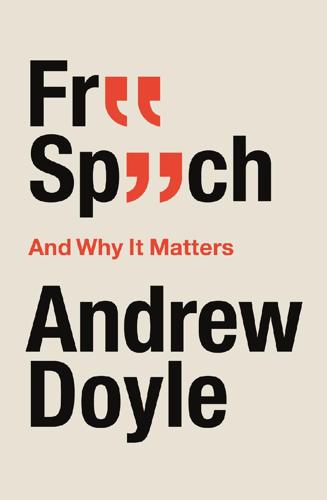
Free Speech And Why It Matters
by
Andrew Doyle
Published 24 Feb 2021
It is likewise detrimental to our enjoyment of art if we are obliged to react from a position of rectitude. It is perfectly legitimate to appreciate a work of art while detesting its underlying moral intention. When we think of censorship our minds run to the draconianism of the Star Chamber, the Bishops’ Ban of 1599, the Index Librorum Prohibitorum of the Catholic Inquisition, or the burning of books in Nazi Germany. But self-censorship can be just as damaging to the artistic health of a nation. The explosion of social media has provided a forum in which non-conformist viewpoints can be lambasted in the most public way, with artistic representation being continually scrutinised through the lens of identity politics.

The Dictionary People: The Unsung Heroes Who Created the Oxford English Dictionary
by
Sarah Ogilvie
Published 17 Oct 2023
By 1879, when Ashbee’s pornography collection had reached a very considerable size, he began to contribute to the Dictionary, reading books in his own library to send in slips to the OED. Just two years earlier, Ashbee had published a bibliography of obscene literature, which is now acknowledged as his masterwork, the Index Librorum Prohibitorum, or Index of Books Worthy of Being Prohibited (1877), under the pseudonym Pisanus Fraxi, an anagram of the Latin for ash, fraxinus, and bee, apis. He explains in the book’s preface that ‘I am not an author by profession; but being actively engaged in pursuits of an entirely different nature, have sought recreation in compiling this work during my few leisure hours ...
…
counterfeit money 113 sewage pipes 109–10 Underground Railroad 270 American Civil War 264 American Dialect Society 267 American English/American words 89, 260, 267, 273, 275, 281–2 and spelling reform movement 86–7 see also Native American words American Philosophical Society 313 Anstruther-Thomson, Clementina (‘Kit’) 231 ‘appendicitis’ (OED entry) 45 Arber, Professor Edward 278 Arbuthnot, Foster Fitzgerald 219 Arnold, Matthew 332 Arnold, Thomas (1742–1816): Observations on the Nature ... of Insanity ... 161 Arnold, Thomas (1795–1842): History of Rome 32 Ashbee, Agnes 221, 222 Ashbee, Charles 221–3 Ashbee, Elizabeth (née Lavy) 217, 218, 221, 222–3 Ashbee, Elsa 221, 222 Ashbee, Frances 221, 223 Ashbee, Henry Spencer 214–15, 216, 217–21, 220, 222, 223, 249, 340 Index Librorum Prohibitorum 219 My Secret Life 219–21 Ashbee, Louisa Maud 223 Association for the Higher Education of Women 209–10 Athenæum, the 256 Atkins, Dr Francis 268, 269, 336 Atwood, Carille Winthrop 261 Auckland Evening Post 187, 188–9 Auden, W.
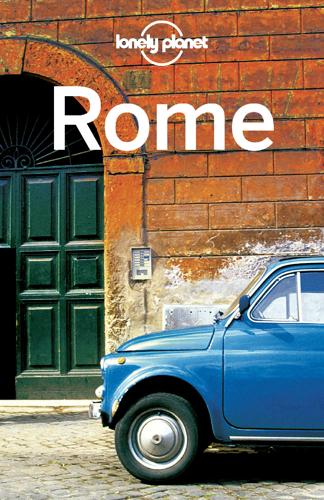
Rome
by
Lonely Planet
But in contrast to the Renaissance, the Counter-Reformation was a period of persecution and official intolerance. With the full blessing of Pope Paul III, Ignatius Loyola founded the Jesuits in 1540, and two years later the Holy Office was set up as the Church’s final appeals court for trials prosecuted by the Inquisition. In 1559 the Church published the Index Librorum Prohibitorum (Index of Prohibited Books) and began to persecute intellectuals and freethinkers. Galileo Galilei (1564−1642) was forced to renounce his assertion of the Copernican astronomical system, which held that the earth moved around the sun. He was summoned by the Inquisition to Rome in 1632 and exiled to Florence for the rest of his life.
…
Dan Brown’s thriller Angels and Demons (2001) is set in Rome, as is Kathleen A Quinn’s warm-hearted love story Leaving Winter (2003). Jeanne Kalogridis transports readers back to the 15th century in her sumptuous historical novel The Borgia Bride (2006), a sensual account of Vatican scheming and dangerous passions. In 1559 Pope Paul IV published the Index Librorum Prohibitorum (Index of Prohibited Books), a list of books forbidden by the Catholic Church. Over the next 400 years, it was revised 20 times, the last edition appearing in 1948. It was officially abolished in 1966. Robert Harris’s accomplished fictional biography of Cicero, Imperium (2006), is one of a number of books set in 1st-century Rome.

Scale: The Universal Laws of Growth, Innovation, Sustainability, and the Pace of Life in Organisms, Cities, Economies, and Companies
by
Geoffrey West
Published 15 May 2017
At the age of sixty-nine and in poor health, he was brought before the Inquisition and found guilty of heresy. He was forced to recant and after a brief imprisonment spent the rest of his life under house arrest (nine more years during which he went blind). His books were banned and put on the Vatican’s infamous Index Librorum Prohibitorum. It wasn’t until 1835, more than two hundred years later, that his works were finally dropped from the Index, and until 1992—almost four hundred years later—and for Pope John Paul II to publicly express regret for how Galileo had been treated. It is sobering to realize that words written long ago in Hebrew, Greek, and Latin, based on opinion, intuition, and prejudice, can so overwhelmingly outweigh scientific observational evidence and the logic and language of mathematics.
…
Statistical Self-Similarity and Fractional Dimension” (Mandelbrot), 139 hubs, 297–98, 319–20 hull shape, 71 Human Behavior and the Principle of Least Effort (Zipf), 310 hunter-gatherers, 187, 213, 282, 283, 287, 386, 401 Hutton, Will, 263 Huxley, Aldous, 98 Huxley, Julian, 97, 98, 164 Huxley, Thomas, 98 hydrodynamics, 71, 131–32 hypoxia, 160 If Mayors Ruled the World (Barber), 262 impedance matching, 122–23, 128–29, 155, 158 increasing returns to scale, 18, 19, 275–76, 378 indeterminate growth, 165–66 Index Librorum Prohibitorum, 38 India, 10, 231, 280 growth curve, 375 individual performance and deviations from scaling, 50–51 industrial city, rise of, 222–26 Industrial Revolution, 9, 184, 185, 191, 209, 211, 214, 215, 216, 223–26, 229–30, 236–37, 328–29, 416 inequality, 286–87 infant mortality, 185–86 Information Society as a Complex System (ISCOM), 250–51, 385 infrastructural networks, 113, 321, 327, 374 infrastructure.

The Library: A Fragile History
by
Arthur Der Weduwen
and
Andrew Pettegree
Published 14 Oct 2021
By the early decades of the seventeenth century, the Venetians, until this point the largest contingent of foreign visitors, had virtually vanished from the Frankfurt fair, cutting off their access to the scientific and scholarly books produced by the northern centres of publishing.41 8. An edition of the Index librorum prohibitorum (1758), a cornerstone of the Catholic response to the threat of Protestantism. The frontispiece of the book shows a pile of heretical books in flames. The uncompromising reaction of the papacy to the Reformation meant that libraries were devastated in unexpected ways. Jewish libraries were one victim of the repressive atmosphere of the second half of the sixteenth century.
…
Verso of a leaf from the Gutenberg Bible. It contains Sirach (Ecclesiasticus) 43:25–45:2. Wikimedia Commons / Miami University Libraries. 7. Coenraet Decker, View of the Ruins of the Cloister Koningsveld, near Delft (1680). Rijksmuseum, Amsterdam: RP-P-1905-5697. 8. Frontispiece of an edition of the Index librorum prohibitorum (1758). Library of Congress: LC-USZ62-95166. 9. Hendrik Bary, Portrait of the Dutch theologian Jacobus Taurinus (1576–1618) (c.1657–1707). Rijksmuseum, Amsterdam: RP-P-1894-A-18220. 10. Catalogus variorum et insignium librorum Pauli Johan: Resenii (Copenhagen: Henrici Gödiani, 1661). Det Kongelige Biblioteket, Copenhagen. 11.

Paper Machines: About Cards & Catalogs, 1548-1929
by
Markus Krajewski
and
Peter Krapp
Published 18 Aug 2011
Any volumes that turn out to be duplicates or rejects are assigned to provincial universities.63 The second tactic consists of trying to remedy the problem at the root—by setting up a quality filter to prevent the publication of “pointless brochures.”64 Counter to Maria Theresa’s order of 1750 (to overcome the 38 Chapter 3 shortage of books by reprinting), Gottfried van Swieten feels impelled to take measures against a flood of academic publications that is more or less the direct result of his own educational reforms.65 By April 1784, authors must deposit a sum of money that is refunded only if the court agrees to the printing; otherwise, the amount is withheld and turned over to welfare.66 Censorship is effective not only in the struggle against the Jesuits, but also in regulating the book flood.67 As a third tactic, Gerhard van Swieten keeps adding to the Roman Catholic Index Librorum Prohibitorum, first published in 1559, appending to the Austrian secular version his brief judgments on numerous additions.68 While Gerhard van Swieten concentrated on scholarly texts, his son Gottfried shifts horizons: “Seen from the most innocent standpoint, Cabalistics and magic are the fruits of a weak and unwholesome mind and must be relegated to the realm of insanity.”69 Furthermore, he protects the court library against theological and legal writings; a significant portion is turned over to the military for use in manufacturing ammunition.70 The most important mechanism available to the librarian for countering the press of new knowledge via librarianship is indeed the catalog itself, which cannot avoid registering the additions, taking the full brunt of the flood.
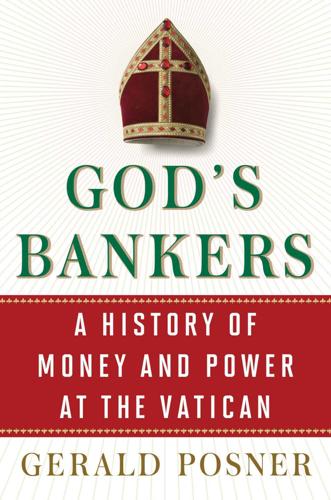
God's Bankers: A History of Money and Power at the Vatican
by
Gerald Posner
Published 3 Feb 2015
That would help priests monitor any youngster who might be entertaining modern thoughts.18 Beyond ferreting out suspected sympathizers, the crackdown expanded to net scholars whose work the simple Pius viewed with suspicion. Encouraged by the Pope, the church moved more aggressively than ever to ban books it considered dangerous. The works of acclaimed modernist scholars such as Ernesto Buonaiuti and Alfred Loisy were transferred to the Index Librorum Prohibitorum (Index of Prohibited Books). Writers who refused to be silenced, like George Tyrell, were excommunicated.I And the Pope stacked the Vatican’s Biblical Commission with regressive prelates who recommended the suspension of the entire theological faculties at leading Swiss and French institutes and universities.20 A Pope with such a backward view of the world did little to modernize how the Vatican’s financial advisors operated.21 He relied on Pacelli, who told him that the church was solvent although money was tight.
…
Leading cardinals who had been his friends did nothing to help him. After twenty years as the chief lay advisor to two Pontiffs, Pacelli was finally without influence. His fall was so great that when Pius was on his deathbed in a couple of years, a Papal chamberlain turned him away. * * * I. The Index Librorum Prohibitorum was active from 1559 until Pope Paul VI eliminated it in 1966. Catholics could be excommunicated for owning or reading the banned books. The Koran and Talmud were prohibited. More than 3,000 authors and 5,200 books were banned over the centuries. The writers ranged from ancient ones such as Aristotle and Plato to philosophers such as Voltaire and Kant to novelists such as Hugo and Balzac.
…
See generally Chadwick, A History of the Popes, 355–59; see also Cornwell, Hitler’s Pope, 39–40. 18 Historian John Cornwell theorized that the decree from Pius to lower the confessional age to seven inadvertently “prompted sex complexes” and that pedophile clerics used it to target their victims. John Cornwell, The Dark Box: A Secret History of Confession (New York: Basic Books, 2014). 19 M. De Bujanda and Marcella Richter, ed., Index librorum prohibitorum: 1600–1966, Vol. XI (Geneva: Librairie Droz, 2002). 20 Chadwick, A History of the Popes, 356. 21 In a 1907 decree, Pius branded the burgeoning “modernist movement”—represented in part by the works of Sigmund Freud, Albert Einstein, and Friedrich Nietzsche—as heresy. Intellectuals universally castigated Pius’s thinking as a giant backward step for the church. 22 Archivo Segreto Vaticano, SdS, Spoglio di Pio X, fasc. 1, letter of April 2, 1905; fasc. 10, three receipts for a total of 500,000 lire, dated August 14, 1907, and September 28, 1914; see Pollard, Money and the Rise of the Modern Papacy. 23 Riccards, Vicars of Christ, 67. 24 Pius concentrated on Catholics in Poland, then under Russian control.

Big Bang
by
Simon Singh
Published 1 Jan 2004
For two weeks, the evidence mounted against Galileo and there were even threats of torture, but Barberini continually called for leniency and tolerance. To some extent he was successful. After being found guilty, Galileo was neither executed nor thrown into a dungeon, but sentenced instead to indefinite house arrest, and the Dialogue was added to the list of banned books, the Index librorum prohibitorum. Barberini was one of three judges who did not sign the sentence. Galileo’s trial and subsequent punishment was one of the darkest episodes in the history of science, a triumph for irrationality over logic. At the end of the trial, Galileo was forced to recant, to deny the truth of his argument.
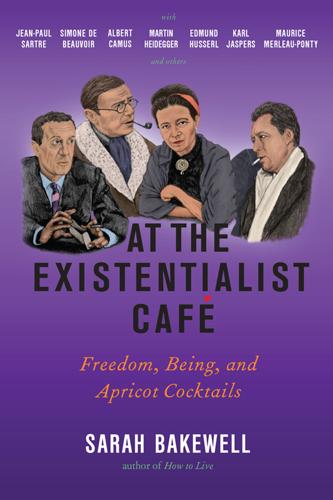
At the Existentialist Café: Freedom, Being, and Apricot Cocktails With Jean-Paul Sartre, Simone De Beauvoir, Albert Camus, Martin Heidegger, Maurice Merleau-Ponty and Others
by
Sarah Bakewell
Published 1 Mar 2016
In his novel The Reprieve, Sartre lent a similar dilemma to his character Boris, based on Bost. 14 ‘There is no traced-out path’: Sartre, interview with C. Grisoli, in The Last Chance: Roads of Freedom IV, 15 (originally published in Paru, 13 Dec. 1945). 15 Sartre on Hiroshima: Sartre, ‘The End of the War’, in The Aftermath of War (Situations III), 65–75, this 65. 16 Index: J. M. De Bujanda, Index des livres interdits, XI: Index librorum prohibitorum (Geneva: Droz, 2002) lists Sartre’s opera omnia, 808 (Decr. S. Off. 27-10-1948), and Beauvoir’s Le deuxième sexe and Les Mandarins, 116 (Decr. 27-06-1956). See Thompson, Sartre, 78. 17 ‘Sickening mixture’: Les nouvelles littéraires, quoted in ‘Existentialism’, Time (28 Jan. 1946), 16–17, this 17. 18 ‘If you were twenty’: Cazalis, Les mémoires d’une Anne, 84. 19 ‘Sir, what a horror!’
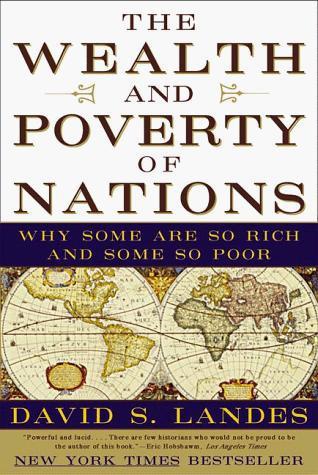
The Wealth and Poverty of Nations: Why Some Are So Rich and Some So Poor
by
David S. Landes
Published 14 Sep 1999
The Spanish authorities, both lay and clerical, viewed Lutherans (all Protestants were then seen as Lutherans), not as dissenters, but as non-Christians, like Jews and Muslims enemies of the faith.22 Any thoughts of ending the Inquisition were shelved, and Church and civil authorities joined to control thought, knowledge, and belief. In 1558, the death penalty was introduced for importing foreign books without permission and for unlicensed printing. Universities reduced to centers of indoctrination; unorthodox and dangerous books were placed on an Index Librorum Prohibitorum (1557 in Rome, 1559 in Spain), and safe books appeared with an official imprimatur (“let it be printed”). Among the books on the Spanish list: scientific works banned because their authors were Protestant. Despite smuggling, hazardous to the health, the diffusion of new ideas to society at large slowed to a trickle.
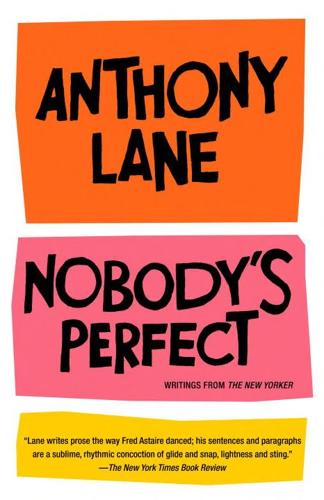
Nobody's Perfect: Writings From the New Yorker
by
Anthony Lane
Published 26 Aug 2002
But to French communists, who brought to their totalitarian faith the kind of exclusive rigor that was formerly the preserve of French Catholicism, it was blasphemy. Gide’s collected works were banned in the Soviet Union, and one year after his death they were placed by the Vatican on the Index librorum prohibitorum. This is a fine double whammy: any author who is deemed wrong by so many people must be doing something right. What Gide did right was perhaps not as simple as the version that he offered to the world on receiving the Nobel Prize. “If I have represented anything,” he wrote, “it is, I believe, the spirit of free inquiry, independence, insubordination even.”

Europe: A History
by
Norman Davies
Published 1 Jan 1996
Though there is some dispute again about precedence, Pope Innocent VIII (r. 1484–92) either initiated or consolidated the rule that all publications should receive a bishop’s licence, [PRESS] Thanks to the flood of books produced during the Renaissance and Reformation, the Church hierarchy increasingly sought guidance from the Vatican; and the Council of Trent demanded action. The result was the Index Librorum Prohibitorum or ‘Guide to Prohibited Books’ drawn up by Paul IV in 1557. Owing to dissensions in the Vatican, that first version was suppressed; and it was the second version of 1559 which was eventually published. Revised yet again at the request of the Council, the Tridentine Index of 1564 set the norm for subsequent practice.